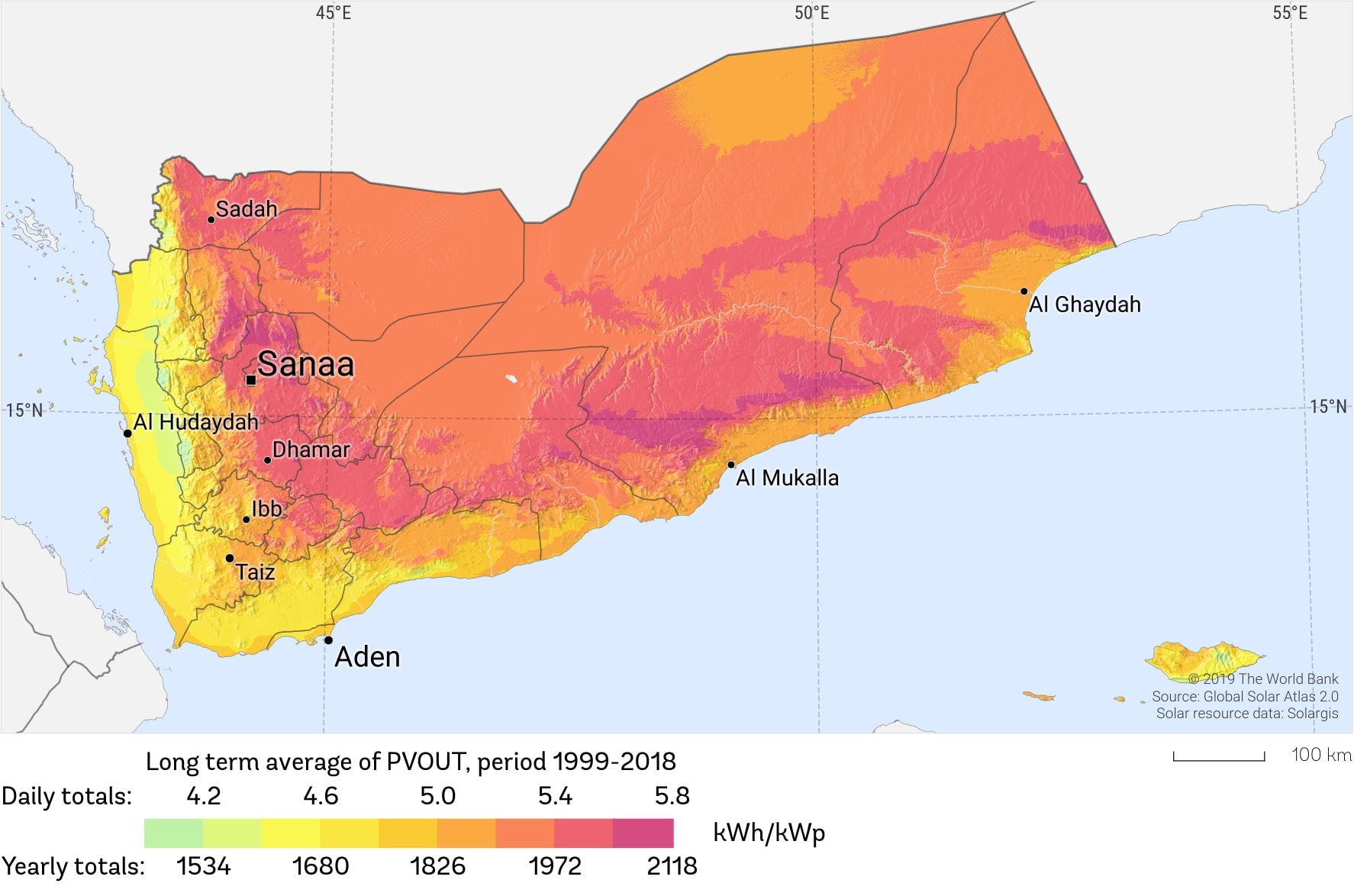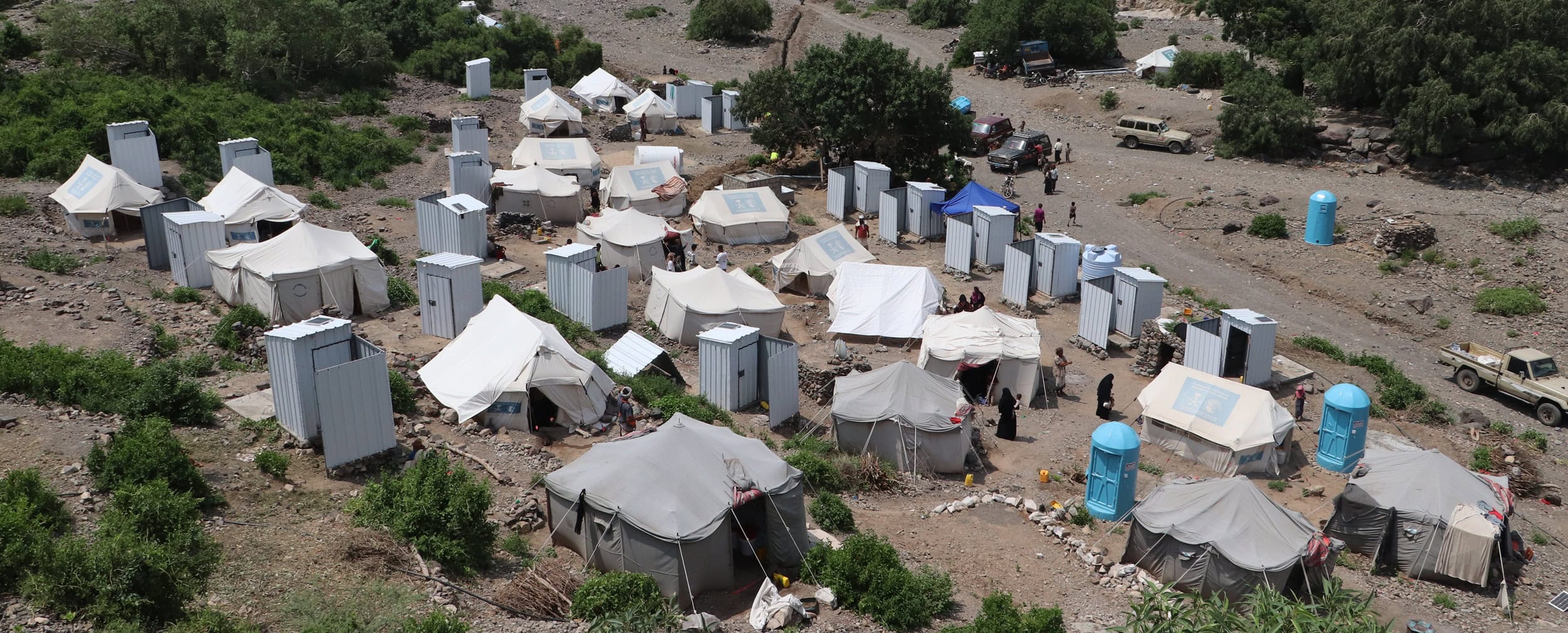
آخر تحديث في: 19-02-2022 الساعة 5 مساءً بتوقيت عدن
Ahmed Bahakim* (South24)
The conflict in Yemen 2015 has had a devastating impact on the entire country's infrastructure. Aden as one of the largest cities in the country with an estimated population of almost 3 million people is still waiting for some level of improvement in electricity utilities, in times where finding gas and diesel is still a monumental task for most of the people living in the city.
Critical infrastructure, including hospitals, water wells, gas stations and sewage treatment centers are all severely affected without electricity. People's livelihoods have been impacted severely, especially those who rely heavily on farming and irrigation where more than 80% of the Yemeni economy relies on these sectors and people's lives depend on it.
Despite the blackouts and the lack of electricity, Yemen's solar sector has emerged as one of the few success stories, a growing industry in solar revolution has burst in these desperate circumstances, with a complex supply chain that connects major suppliers overseas with smaller dealers all over the country.
The Yemen civil war is causing the country's infrastructure to rapidly change so that sustainable renewable energy can power homes and businesses again. With the appropriate help, Yemen's post-conflict power sector could leapfrog or even bypass previous generations of reforms and jump ahead of other countries when it comes to electricity provision. This would give them an opportunity to deliver energy in a totally new way. which would be resilient to political, economic, and conflict situations.
Regardless of the high importance shown by the government in utilizing sustainable renewable energy technologies exclusively in solar and wind energy to boost the electrification rate, the government's progress has been slow and very disappointing. For instance, with the backing of many international donors and consultants, the government adapted several studies, one being the National Strategy for Sustainable Renewable Energy and Energy Efficiency developed in 2009. This national strategy appointed energetic targets to involve substantial renewable resources in the energy blend. The guideline scenario desires to make renewable energies as 15% percent of the total generation blend by the year 2025.
The advancement of domestic applications for sustainable renewable energy has been moderate regardless of the significant potential, especially for rural households. By 2005, the entire installed capacity of domestic applications did not exceed 100 kW. Likewise, there was a constrained number of PV applications for telecommunication and television industries considering signal transmission purposes.
Different barriers discriminated against the development of renewable energy sources, among other things, high upfront cost and scarcity of access to finance, high subsidies for traditional electricity sources, lack of realization among the public, lack of an institutional activity, regulatory and legal frameworks and lack of base infrastructure and confidence in solar and wind energy technologies, among others.
Preceding the war, the government together with the support of numerous lenders, initiated important steps favoring the implementation of the country’s first wind farm. The Arab Fund for Economic and Social Development, in association with the World Bank along with the Organization of the Petroleum Exporting Countries (OPEC) Fund, endorsed a loan in 2012 for the construction of a wind farm in (Al-Mokha), with a designed capacity of 60 Megawatts to be connected to the national grid. Nonetheless, the project has been suspended because of the political and economic unrest in the country.
The public electricity sector has been considerably damaged by the ongoing armed conflict and has experienced substantially physical and non-physical damages. The national grid, in Aden and in many other cities under the government's-controlled areas are experiencing blackouts in regular bases, leaving the people in the dark, dispossessing them of adequate basic utilities and services like water supply, health care, among many other services. The public power plants at meantime are not running at full capacity because of technical and/or mechanical issues or else because of routinely fuel shortages.
Only the immediate areas neighboring power plants are being supplied like Marib, betraying neighboring governorates that are relying on the national grid like Sanaa without any public electricity supply whatsoever. In 2015, about 90% percent of the Yemeni population did not have any access to public electricity. By the end of the year 2019, and correspondent to a phone survey that was conducted by the World Bank through a domestic consulting firm, on a national sample of 1,000 households, has demonstrated that around 12% percent of the population in Yemen relied primarily on public electricity for their everyday electrical needs. While, the health sector, in 2020, illustrated that only 50% percent of health facilities are functioning, with available services negatively affected by power outages.
A night-time light assessment, an approach utilized to indicate human life activities in war countries such as Iraq and Syria, was conducted in Yemen from 2012 to 2017. The concept is to process satellite images captured at night to calculate the intensity of the night-time light. The conducted study demonstrated that Yemen’s total night-time light substantially dropped from 2015 to 2017, in conjunction with the air attacks that targeted many areas in the country. Civilians displaced from war zones and intentional darkening at time of air raids may have contributed to these statistics, but much of the night light decrease was obviously as result of national grid collapses and power stations fuel shortages.
The electricity utilities and the power supply in Yemen and specifically in Aden is facing complications in many chronic technical, political and economic challenges.
These challenges are summarized in the following:
1) Extreme dependency on diesel.
2) High technical and nontechnical electricity losses.
3) Financial constraints.
4) Scarcity in skilled employees.
5) Security issues.
6) Poverty and affordability.
7) Inefficient and collapsing power stations.
8) High subsidies for traditional electricity sources.
9) Absence of encouraging laws and policies to attract private investments.
Yemen is a country with huge potential for renewable energy, and Yemenis can work hard to shape their own future for sustainable renewable energy. Entrepreneurship is the engine of innovation that drives this transformation for Yemeni citizens hoping to take power back into their own hands.
Eng. Ahmed Salem Bahakim
is an energy researcher, working as Information Systems Specialist at the Public Electricity Corporation (PEC) in Aden.
Photo: Yemen Photovoltaic power potential map (World Bank)
References:
· PEC – Public Electricity Cooperation in Aden.
· MOE – Ministry of Electricity in Aden.
· World Bank Group
· Jiang, wei & He, Guojin & Long, Tengfei & Liu, Huichan. (2017). Ongoing Conflict Makes Yemen Dark: From the Perspective of Nighttime Light. Remote Sensing. 2017. 8. 10.3390/rs9080798.
الكلمات المفتاحية:

قبل 3 أشهر

قبل 3 أشهر